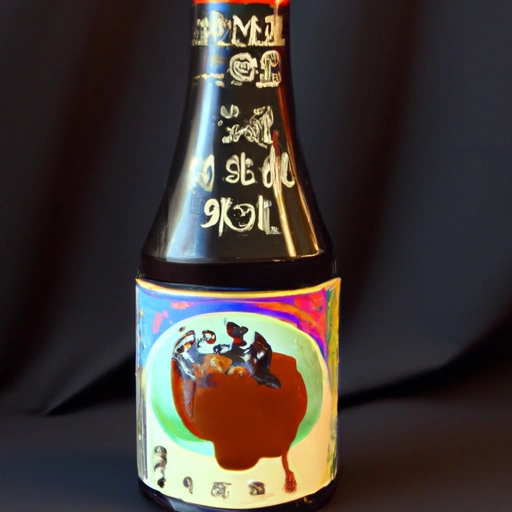Hoisin Sauce
Description

Hoisin sauce is a thick, fragrant sauce commonly used in Chinese cuisine as a glaze for meat, an addition to stir-fries, or as a dipping sauce. Its name literally means 'seafood sauce,' but it does not contain any seafood ingredients. Instead, hoisin sauce is made from a combination of fermented soybean paste, garlic, vinegar, and various spices, often including five-spice powder, chilies, and sweeteners such as sugar or molasses. This savory-sweet sauce is a staple in both traditional and modern Asian cooking and has gained popularity around the globe for its versatility and unique flavor.
Common uses
Hoisin sauce is widely used in culinary applications such as marinades, glazes, dips, and as an ingredient in many dishes. It is also an essential component in the preparation of Peking duck and can be found in the popular mu shu pork and pho, a Vietnamese noodle soup. The sauce's unique sweet and salty flavor profile makes it a favorite for adding richness to recipes and for elevating the taste of grilled meats and vegetables.
Nutritional value
Calories
A typical serving size of hoisin sauce, which is about 2 tablespoons (30 grams or approximately 1 ounce), contains around 70 calories.
Protein
Hoisin sauce contains a modest amount of protein, with about 1 gram per serving.
Fat
This condiment is low in fat, with less than 1 gram per serving.
Carbohydrates
Most of the calories in hoisin sauce come from carbohydrates, with approximately 17 grams per serving, mainly from sugars.
Vitamins
While not a significant source of vitamins, hoisin sauce may contain small amounts of vitamins such as niacin, depending on the specific ingredients used.
Minerals
Hoisin sauce can provide trace amounts of minerals like potassium and phosphorus.
Health benefits
While hoisin sauce is not typically consumed for its health benefits, it can contribute to the overall flavor of a balanced diet when used in moderation. The fermentation of soybeans in the sauce may offer some beneficial probiotics, which are good for gut health. However, it's important to use hoisin sauce sparingly due to its high sugar and sodium content.
Potential risks
The main potential risks associated with hoisin sauce stem from its high sodium and sugar content, which can contribute to health issues such as high blood pressure and blood sugar levels if consumed in excess. Additionally, hoisin sauce contains gluten and soy, which are common allergens for some individuals.
Common recipes
Common recipes featuring hoisin sauce include Peking duck, stir-fries, marinades for grilled meats, spring roll dipping sauce, and as a flavorful addition to sauces and dressings.
Cooking methods
Hoisin sauce is versatile and can be used in various cooking methods such as grilling, roasting, stir-frying, and as a finishing sauce. It's also often used raw as a condiment or dip.
Pairing with other ingredients
Hoisin sauce pairs well with ingredients like duck, pork, tofu, noodles, and a variety of vegetables, enhancing the umami flavor in dishes.
Summary
Hoisin sauce is a savory-sweet condiment that has become a global pantry staple. Its rich flavor enhances a wide array of dishes across various cuisines. While not a health food, it can be enjoyed as part of a diverse and balanced diet. When incorporating hoisin sauce into recipes, it's important to balance its strong taste and consider dietary restrictions related to allergens and sodium content.